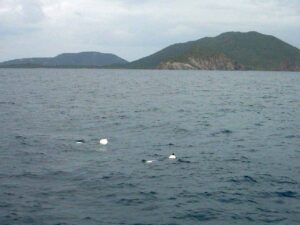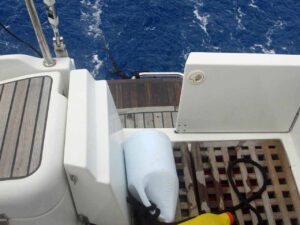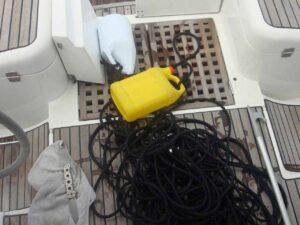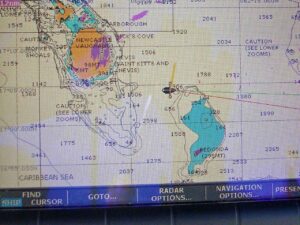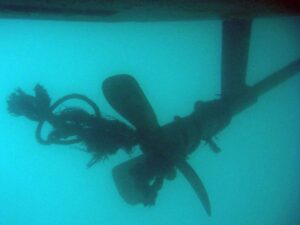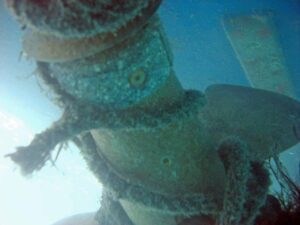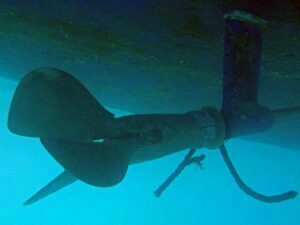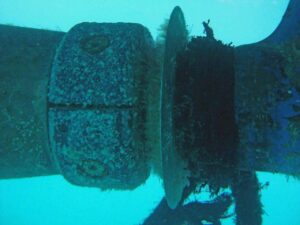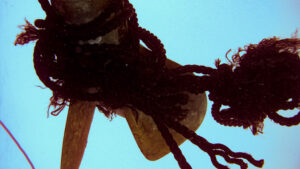Fish traps are difficult to spot!
Fish Trap locations
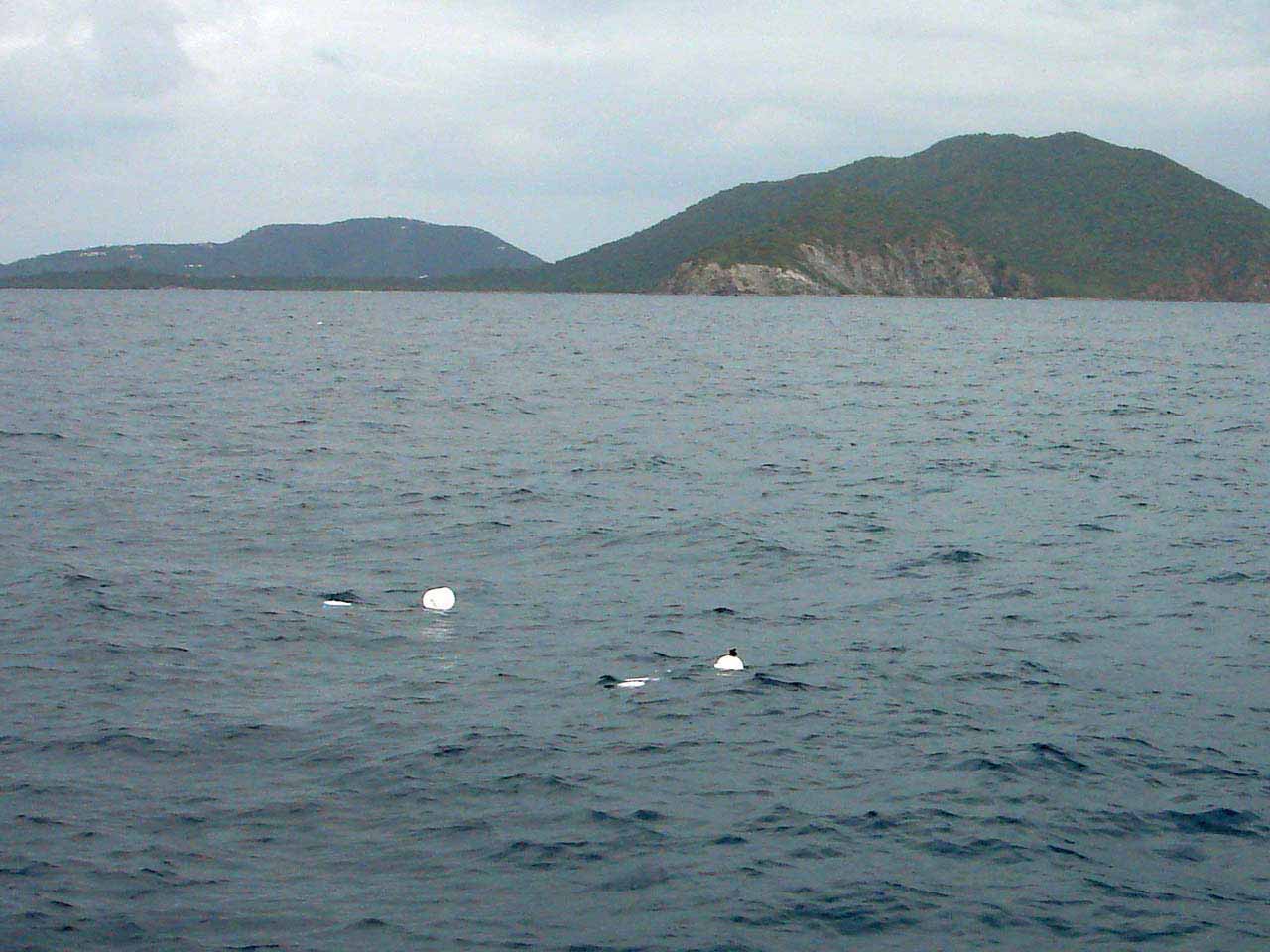
Fish traps are difficult to spot. The sight of two small floating containers several feet apart is common in Caribbean waters. These floating menaces can wreak havoc with steering and propulsion. Clorox bleach bottles, plastic detergent bottles and other similar containers discarded after domestic use are used as floats. Sometimes, the bottles are clear and very difficult to discern. These makeshift floats are preferred to pricey (but more visible) marine floats.
Pots and floats
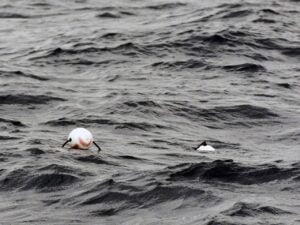
Fish or lobster traps are usually found in shallower waters (<100 feet) close to shore. These fish traps are exceedingly hard to spot. Even when one is keeping a sharp lookout for them, they are easy to miss. Clorox bottles are bright white and thus visible against the water’s backdrop. But the green or blue bottles used are well-nigh invisible. And clear Coca-Cola bottles are nearly impossible to discern in time. When sailing into the setting sun, the little floats can only be seen when they are very close. Too close to allow ample time to turn off the autopilot and avoid them.
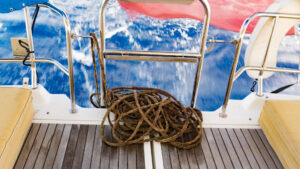
Lines that are heavier than water drop vertically or at a steep angle (due to current or strong wind) from the first float. In such cases, one only needs to avoid hitting them dead-on. A miss of a couple of feet is sufficient to avoid the line fouling on the keel, rudder or propeller. But if the line is light and has a lot of slack in strong currents, it’s a different story. The angle isn’t steep, and one needs to give the visible part of the trap a wide berth to avoid fouling on the boat.
It isn’t always easy to see which side is safer. Sometimes, the current direction overrides the wind direction. So, the best procedure is to get as much distance as possible between the boat and the floats. Occasionally, the fish traps are set so close together in groups that it is like running an obstacle course. I prefer the analogy of trying to negotiate a minefield since the effects of ensnaring a trap can be pretty nasty as well.
Locations
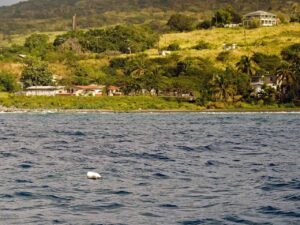
St. Kitts and Nevis have a reputation for being a fishing trap breeding ground. I’m certain that is deserved, not only because I lost an argument over right-of-way with one, but because every single time I’ve rounded the southern tip of Nevis, I’ve encountered masses of them. These fish traps are particularly difficult to spot.
The worst was one late afternoon with the sun just a couple of diameters over the horizon. My course was set right into that sun. Even with sunglasses, a shaded hat and using my hands as shades, it was impossible to see the floats until they were amidships. I don’t know how I managed to avoid them as long as I did.
On that fateful day, I was rounding the southern end of Nevis on my way to Antigua, motor sailing since the wind was weak on the lee side of the island. Plus, I wanted to make Antigua before nightfall.
Caught
I first noticed something amiss when I looked behind the boat and thought to myself, “Cool, I’ve got a dolphin swimming underwater right behind the boat!”. After a couple of seconds of reflection, I wondered to myself, “Are dolphins coloured bright yellow?” and then belatedly realized that what I was seeing was the yellow bottle pictured below being dragged, just under the surface, behind the boat. Throttling down (realizing I was a LOT slower than my previous speed of 8 knots), I turned off the engine and hove to. I’d managed to catch a fishing trap but didn’t know how I’d go about un-catching it.
Rope Cutters
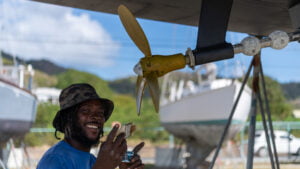
My rope cutter had failed to work, and Zanshin, I was now acting as a super-sized float to a fish trap with at least 80 feet of line. Now that I wasn’t making speed through the water, the float made it to the surface, and I could grab it with a pole. There was a very long length of line attached to the two float bottles. It took a while to pull it all into the boat; alas, there was just a frayed end instead of a trap at the bitter end. Otherwise, I might have been able to re-attach it and at least not leave the fisherman to lament his loss of a trap and line.
After hauling what I could aboard and cutting away what I could see, I decided to press on, having lost over an hour. If I hadn’t been alone aboard, I would have dived off the side to see if any rope was wedged in the rudder. But everything seemed to be moving freely, so I headed off towards Antigua. By this time, the wind had freshened a bit, and I sailed in to just shy of Falmouth harbour when I turned on the engine so that I could motor slowly forward and furl my sails – it is much easier to motor into a harbour than to try to dodge anchored vessels and shallows under sail.
Folding Props
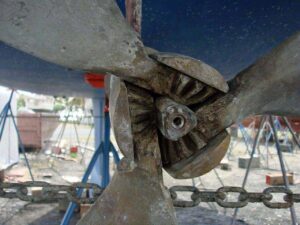
Unfortunately, that was when I realized that something was wrong. The whole ship shuddered and vibrated badly as soon as I put the engine in gear. I assumed that I had managed to bend my shaft during the fish trap fiasco. Consequently, I quickly put the boat back into idle while I tried to figure out how to enter the very crowded harbour under sail.
To make matters a bit more pressing, it was fast approaching dusk. In the tropics, there is very little twilight. Daylight switches from “on” to “off” very quickly. I finally ended up with a compromise solution. Under a heavily reefed mainsail and genoa, I entered the channel and sailed past the protecting reef. Then I risked damage to the boat by idling forward under power and hauling in the sails. The vibrations were bad, but the boat moved. Immediately after leaving the channel, I dropped the anchor and turned off the engine. Early the next morning, I dove on the propeller and, luckily for me, it turned out that the shaft was OK. What had happened was that the line had wrapped around the folding propeller and caused an imbalance. This, in turn, made the shaft vibrate when turning.
Fish traps are difficult to spot, and the consequences of grabbing one can be severe!

